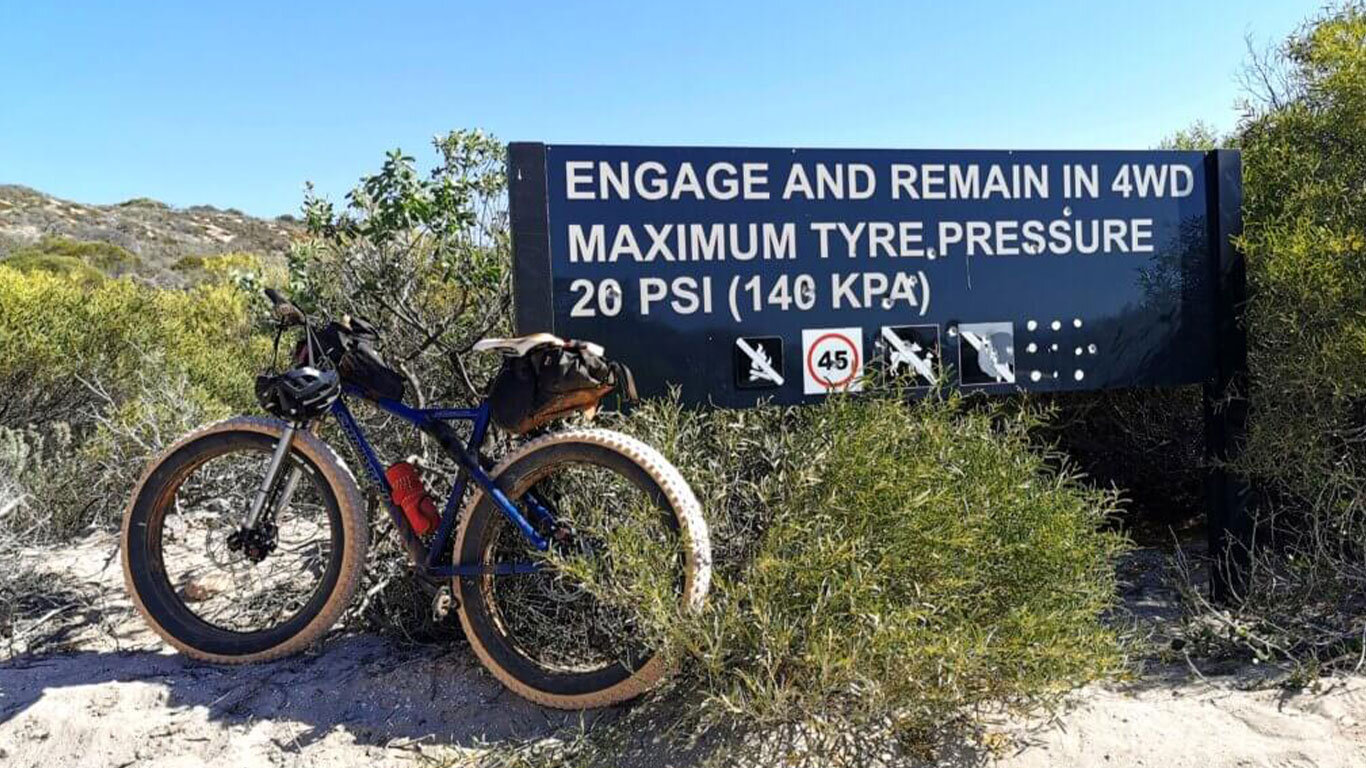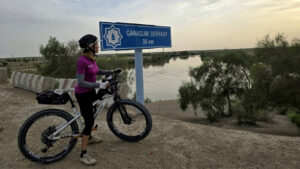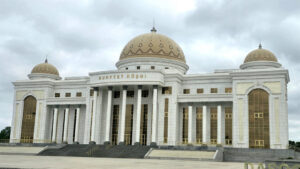Days: 94-100
Dates: 13th – 19th September
Distance: 732 km
Total Distance 2023: 7089 km
Total Distance (2021 + 2023): 8617 km
Tracking map by ZeroSixZero: https://z6z.co/breaking-the-cycle-australia/
My apologies for taking so long to publish the final two blogs – here’s the first one.
Having just completed an intense week of cycling to cover the 731km from Newman to Mount Augustus through the East Pilbara and Ashburton regions, and with the prospect of a similar challenge to reach the finish at Steep Point, the temptation was to have a complete rest day camping beside Mount Augustus. However, I had planned to climb Burringurrah, as it is known by the local Wajarri people, and would have regretted missing the opportunity. The enormous inselberg (lone mountain) rises 717m above the eroding plains, 1105m above sea level.
To beat the heat, Mark, Russell and I made an early start, setting off from the head of the hiking trail at 5.30am guided by the light of our head torches. The first 1.2km was of moderate difficulty and as the early morning light diffused the darkness and I could gradually make out the rocky trail.
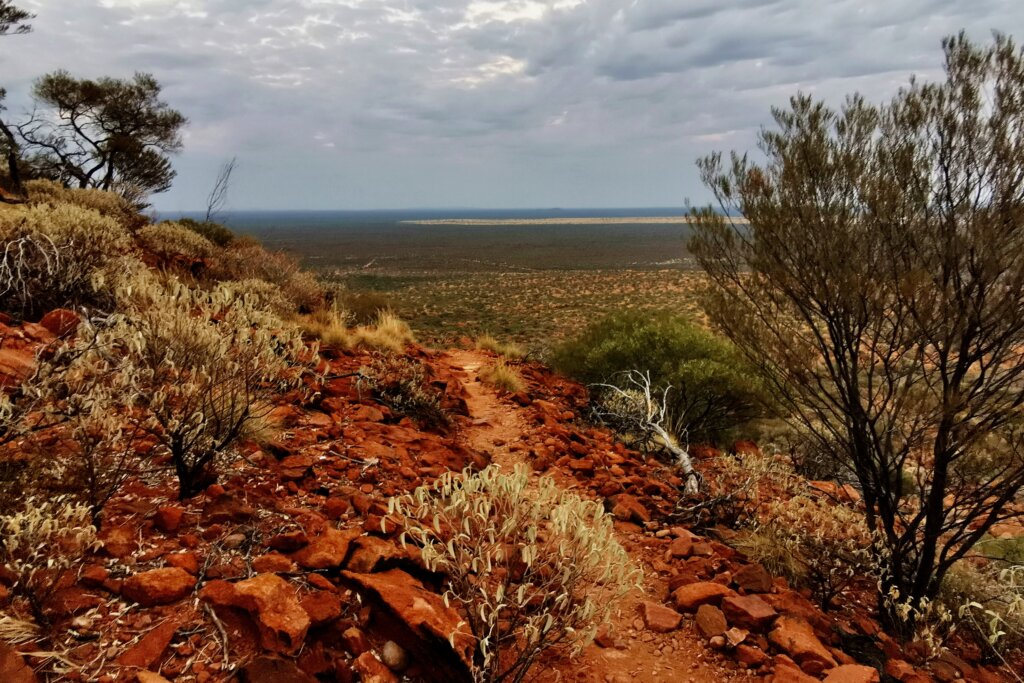
The next 2.8km was a real scramble as we ascended a further 400m up a steep, rocky path. Every so often we stopped for a drinks break, to film or simply to take in the beautiful surroundings. As I ascended and the sun appeared through the morning clouds, the warm orange colours of the mighty sandstone rock became more intense and firey.
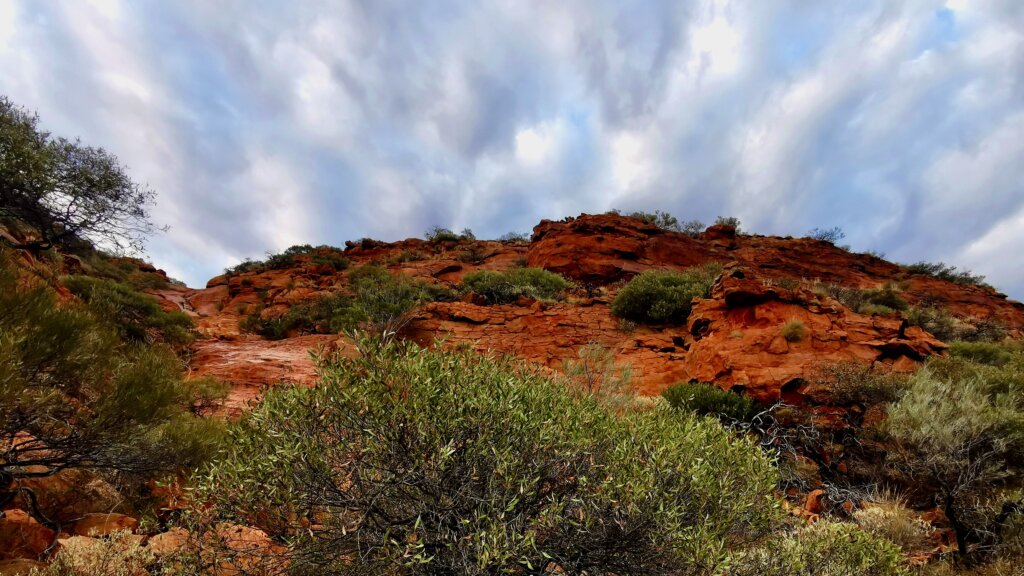
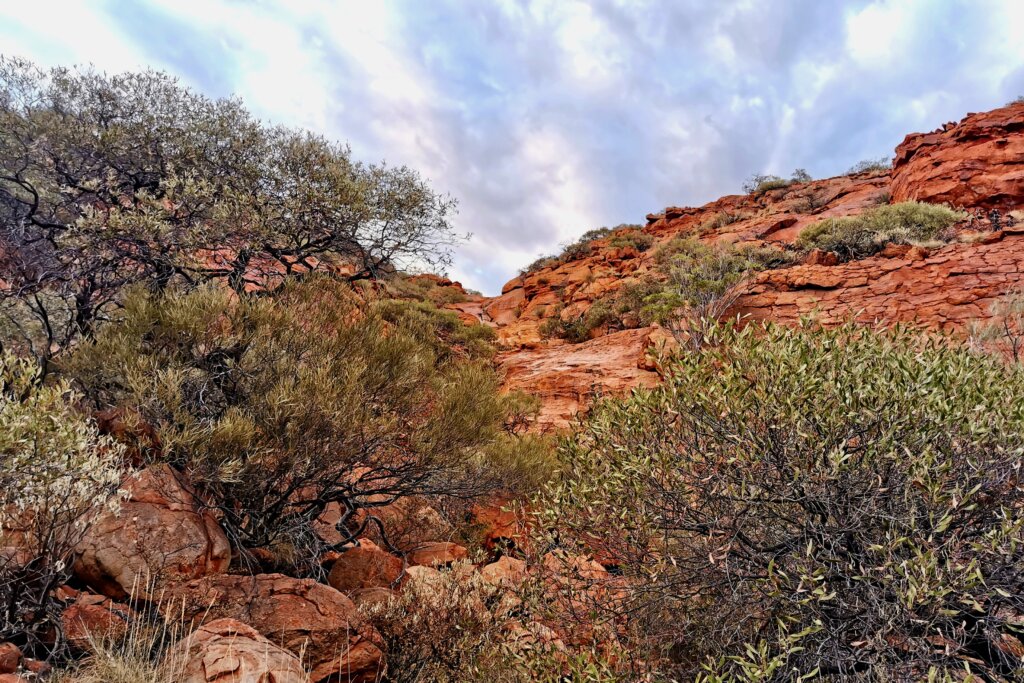
I had been struggling with a painful lower back when walking (from cycling 7-8 hours a day without enough rest or stretching) and I had been worrying about how I would go on the climb carrying a small backpack up the mountain. To my relief, it was manageable and I pressed on trying to adapt to the different form of activity.
After about 3km the gradient rounded off and the the second half of the 6.25km climb was much easier until the final scramble to reach the summit. It was a wonderful feeling to be atop of the world’s largest rock (monocline), 1107m above the plains. In the distance, much lower hills, gradually succumbing to the same forces of erosion that have also shaped Mt Augustus. We celebrated our climb and spent about 45 minutes relaxing and taking in the views. The vastness and subtle colours of the landscape are difficult to capture from behind the lens, but we gave it our best shot.

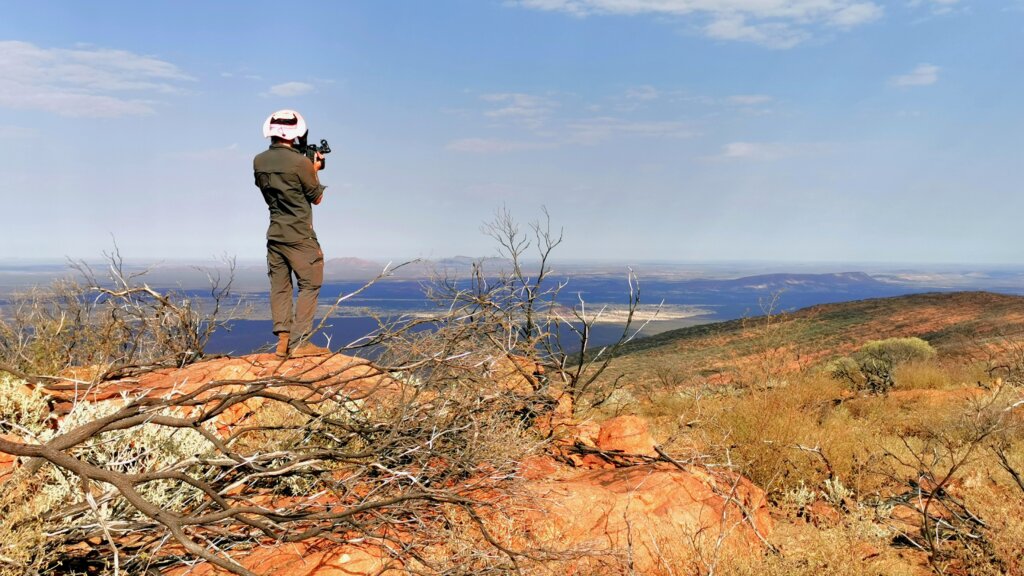
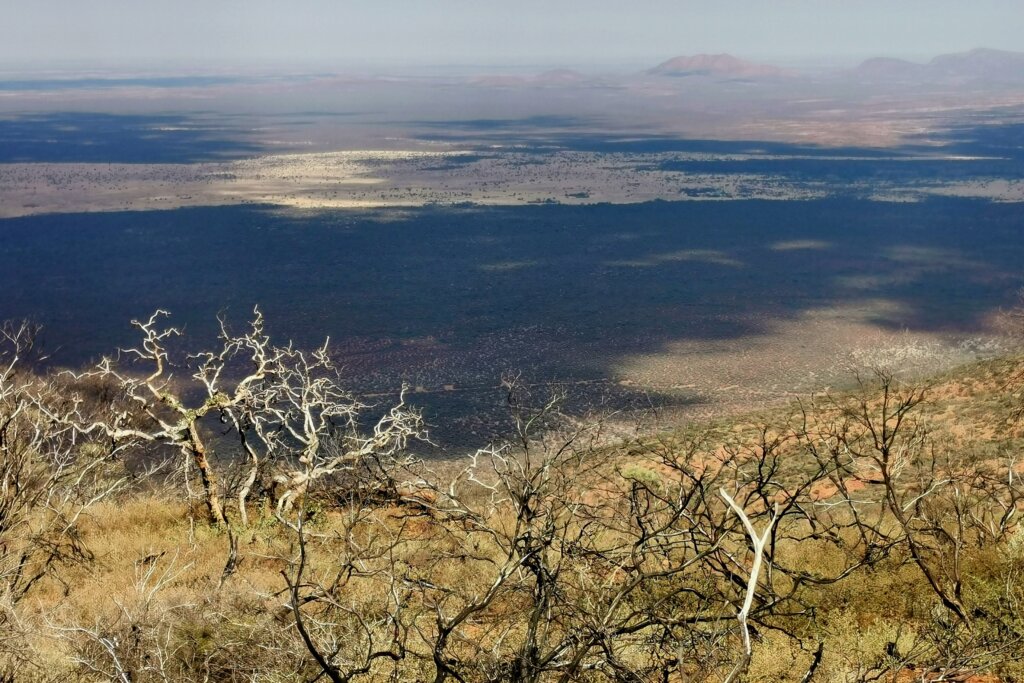
The return journey was the part I was dreading because of my damaged knee. I had brought my special knee brace to try to offload some of the stresses on the descent. It offered a small amount of protection, but I really struggled over the steep section and patiently and painfully worked my way back to base.
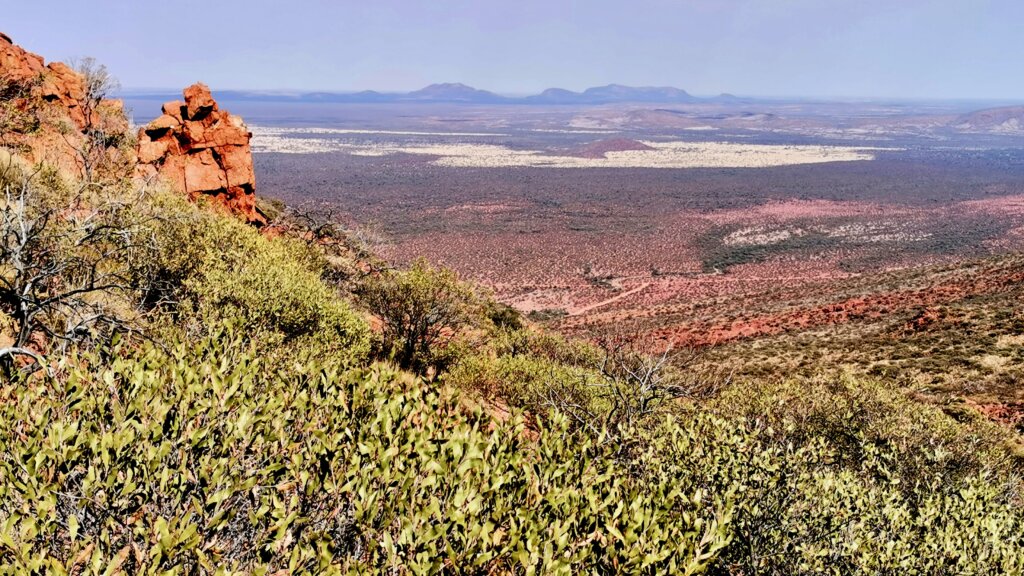
Burringurrah was an incredibly important place for the Wajarri people, particularly in times of drought. Water flowing off the 10km-long rock has formed permanent springs around it’s base which in turn supports the biodiversity of the area. The more abundant environment has provided the Wajarri with food and water for thousands of years, and the many caves made natural shelters.
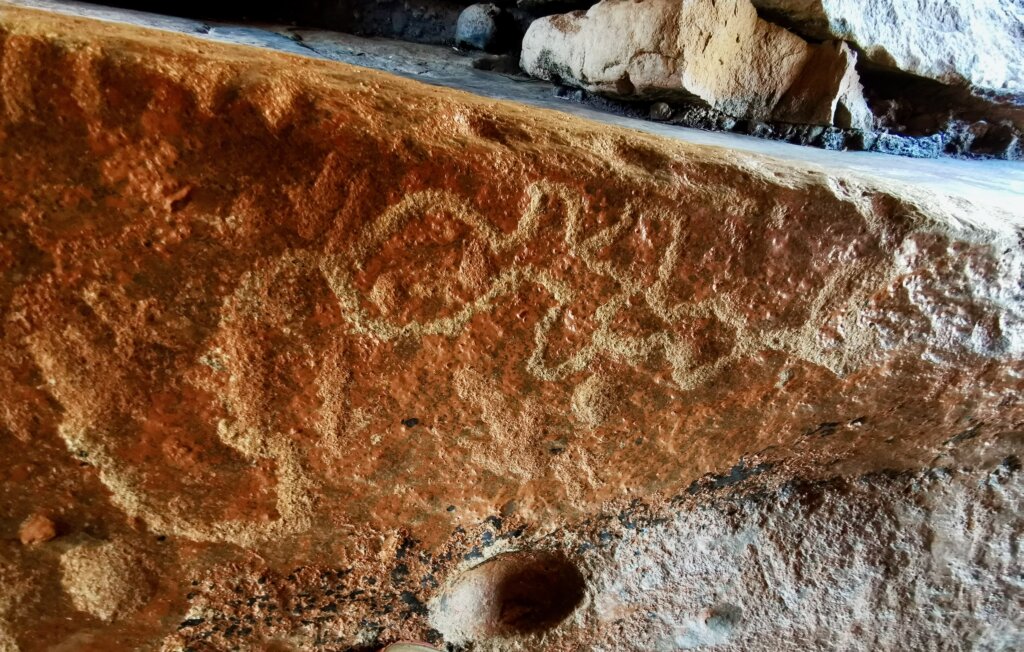
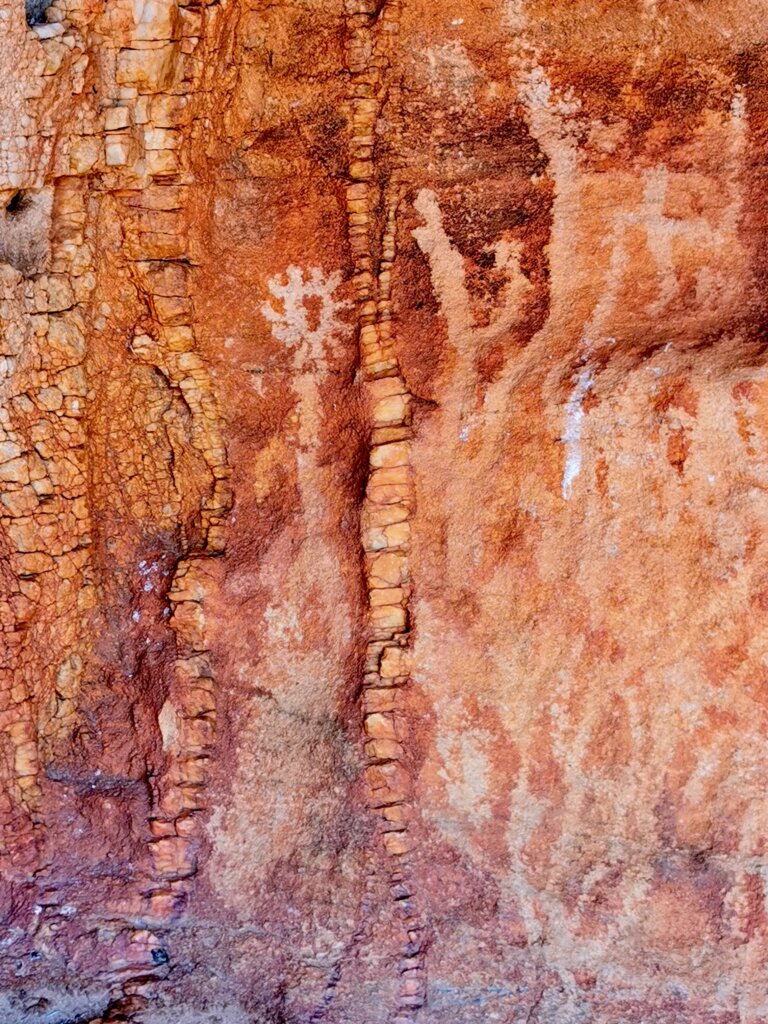
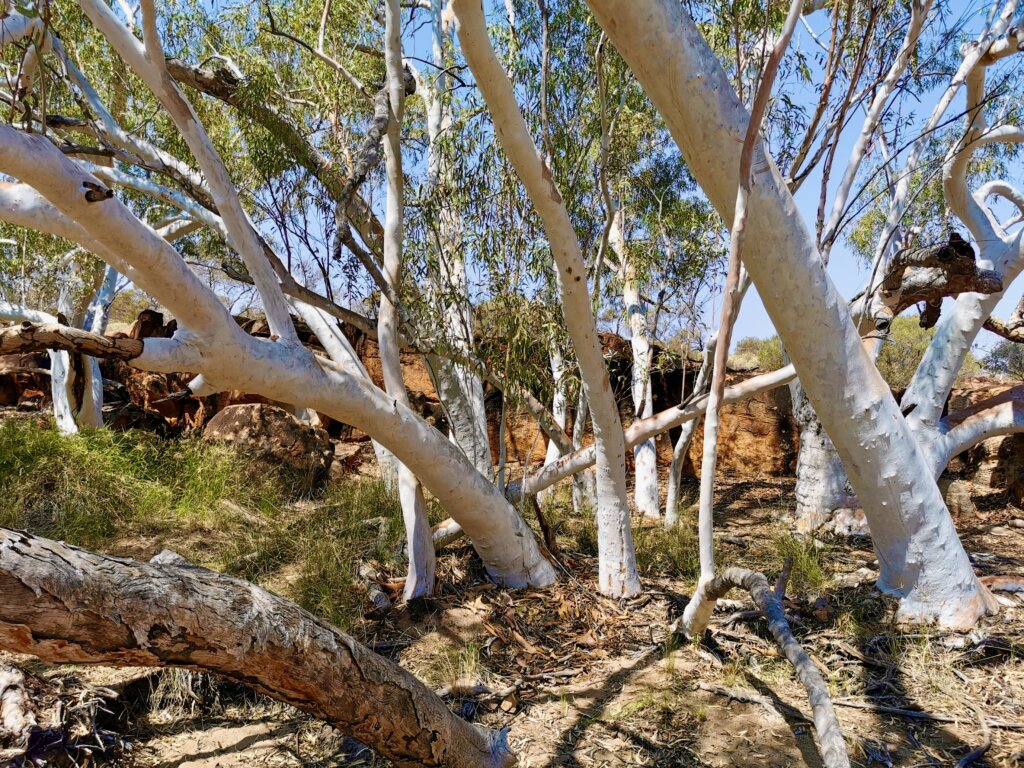
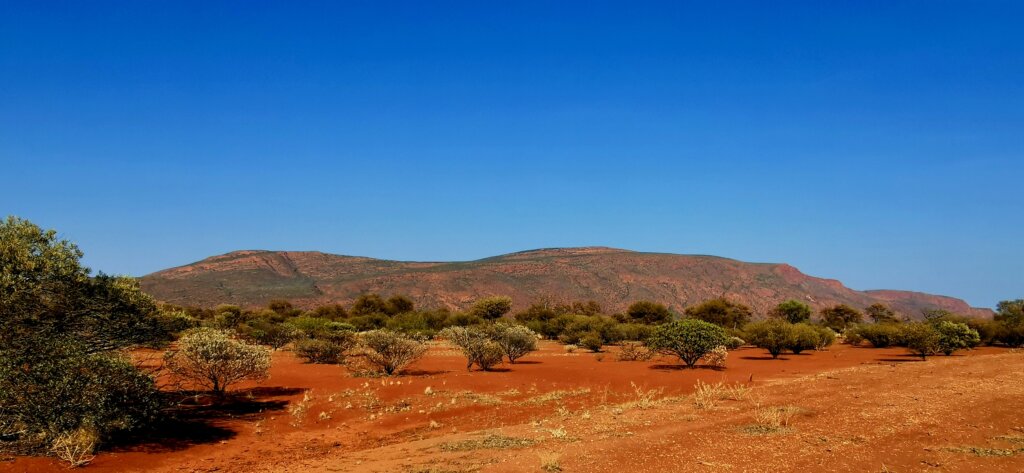
DAY 94 | 110 KM
There was no time to rest as I had to keep moving and average 115km a day for the next four days to make reaching the finish more achievable. The evening after the Mt Augustus climb, a violent gust of wind actually broke my tent which then collapsed on top of me. I had to sleep along the back seat of Neil’s vehicle.
That event was a bit of an omen for the day ahead, Day 94. As I set off, I had a moderate headwind, but I could still progress at a reasonable speed. After the first 30km, the wind steadily increased until I was down to 12km/hr in the powerful gusts. Just before my first break, Martin’s drone was caught in a strong wind gust and, like an aeroplane on a doomed flight path, I watched it crash out of control into a tree. Fortunately it survived with a few superficial chips out of the propellers.
About 50km west of Mt Augustus I reached the Old Bangemall Inn (established in 1896 for gold prospectors) where I picked up on a section of the Charles Kingsford Smith Mail Run. We followed it over the next two days/240km, as far as Gascoyne Junction. In 1924, fresh from a stint as a pilot for Australia’s first commercial airline, Charles Kingsford Smith and Keith Anderson bought a truck and set up business as the Gascoyne Transport Company. Kingsford Smith figured that with his mechanical knowledge and the new-fangled technology of motorised transport he would out-do the camel trains and horse wagons on many inland delivery routes. He also thought that if he was right, the money he would make would finance his dream – to be the first to fly the Pacific.
By the second stint of the day, I was totally struggling with the wind, the heat (35C) and being sore from using different muscles during the hike. It was just a case of hanging in there and making the most of any shelter I could get from the wind. I broke the afternoon into smaller 15km sessions to make it easier mentally.
Just when the team thought we should be stopping I had to insist to put in another 8km and at least cover 110km for the day. I was mindful that the wind could play a big role in these final days and I had to get as many kilometres on the board as I could.
DAY 95 | 120 KM
I awoke pretty sore from everything, particularly my back and hips, which had been the case for about a week, and my knee was still swollen from the Mt Augustus descent. The knee problem I am used to managing and carrying on regardless. The back/hip issue is something that will need rest (after the expedition) and some physio attention. The good news was that the weather was kinder; only a gentle breeze and cooler temperatures (29C).
The gravel Cobra-Dairy Creek Road was pretty good quality and after only a few kilometres I reached the Yinnetharra Station homestead and the mighty Gascoyne River. I was still hundreds of kilometres from the mouth of the Gascoyne but the ephemeral river was already impressive. From there all the way to Gascoyne Junction, 180km away, I crossed many large creeks lined with majestic river gums that were tributaries of the Gascoyne River. The volume of water that flows through these creeks and down the Gascoyne almost defies my imagination.
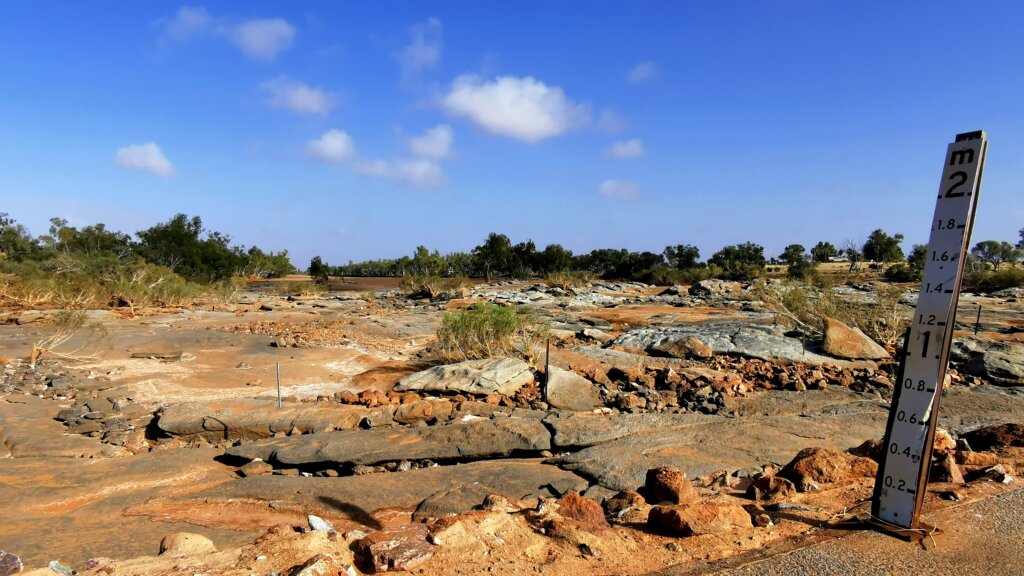
After passing the Dairy Creek Station homestead, I turned west on to the Carnarvon-Mullewa Road towards Gascoyne Junction. This route is a part of the Wool Wagon Pathway, a stock route for graziers to drove their sheep and transport wool to the port to sell.
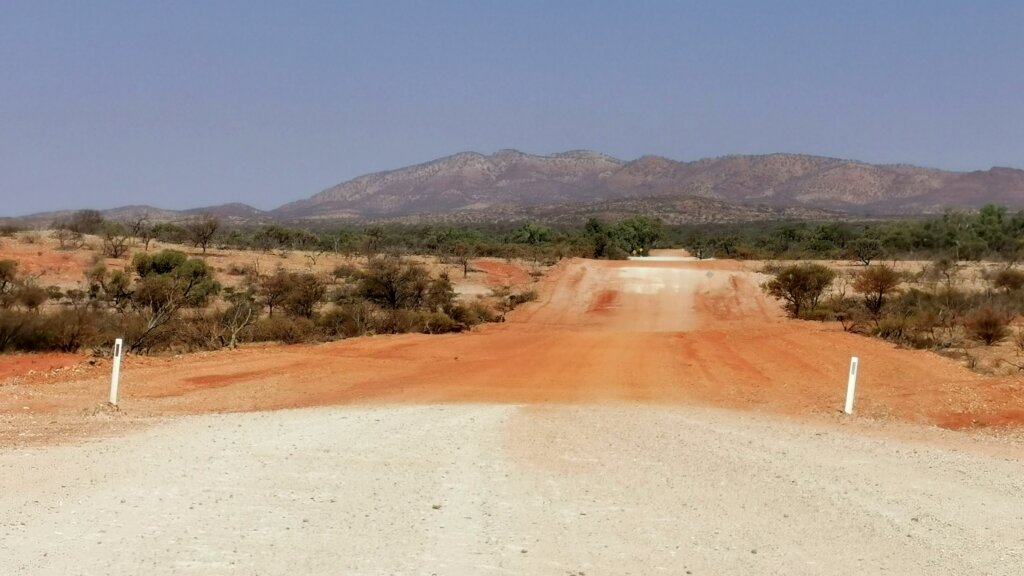
DAYS 96,97 | 118 KM, 117KM
To my surprise, sections of the Carnarvon-Mullewa Road had been sealed and with a beneficial tail wind, I reached Gascoyne Junction in quick time. Gascoyne Junction is located where the Gascoyne and Lyons rivers join. The biggest town we had seen since Paraburdoo, the community has a population of 149 people! We made it a lunch stop before heading south on the Pimbee Road.
For the second half of Day 96 and all of Day 97 I wound my way through station country in the heat (36C), firstly along the Pimbee Road. We camped in a gravel pit near the abandoned Towrana Station before turning off on to the Meedo Road the next day.
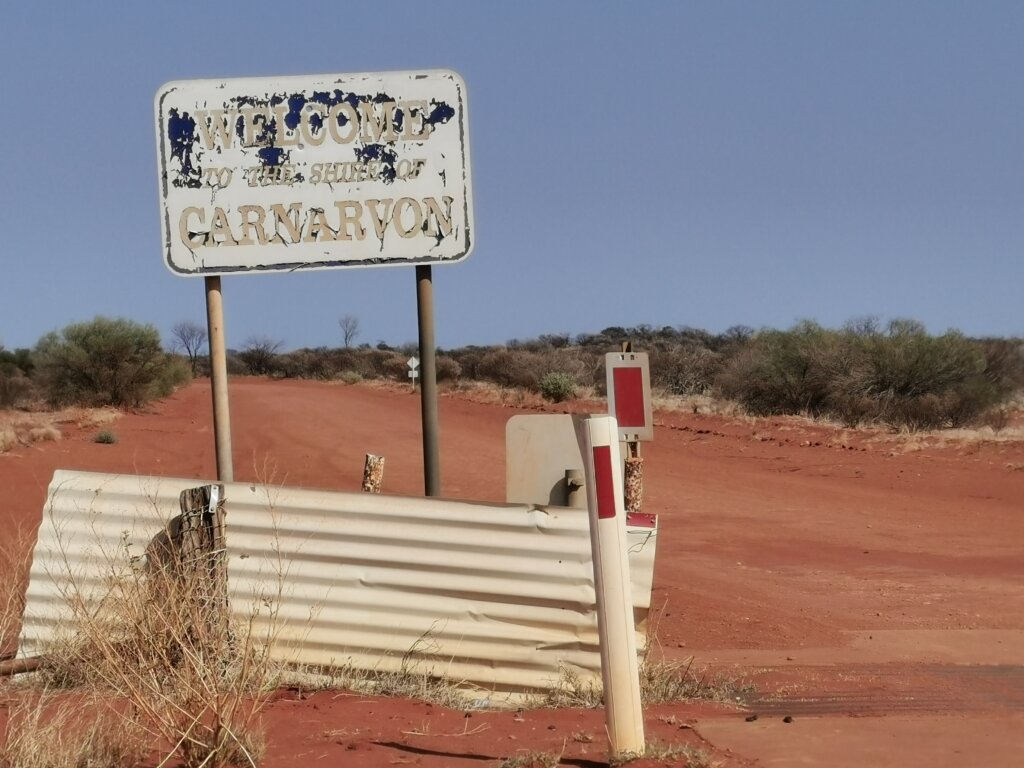
The Meedo Road was smaller and a little more sandy and challenging between the Pimbee Road and Meedo Station, but also more interesting. To the east of the homestead I passed through a landscape dotted with salt pans and low sand dunes. The Wooramel River, another impressive ephemeral river, was a highlight just east of the homestead.
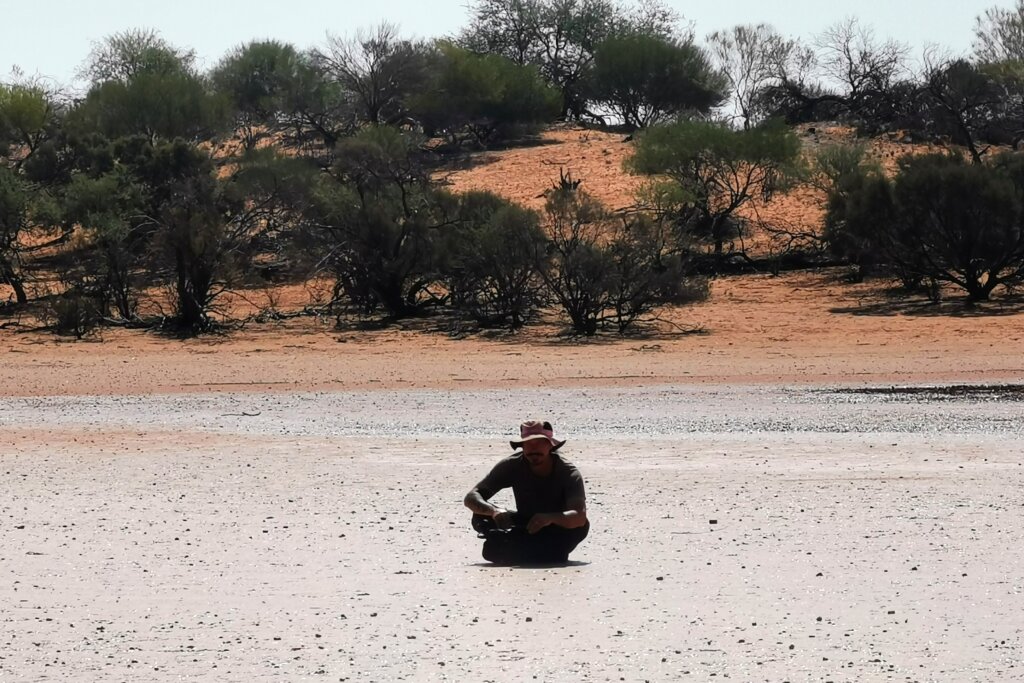
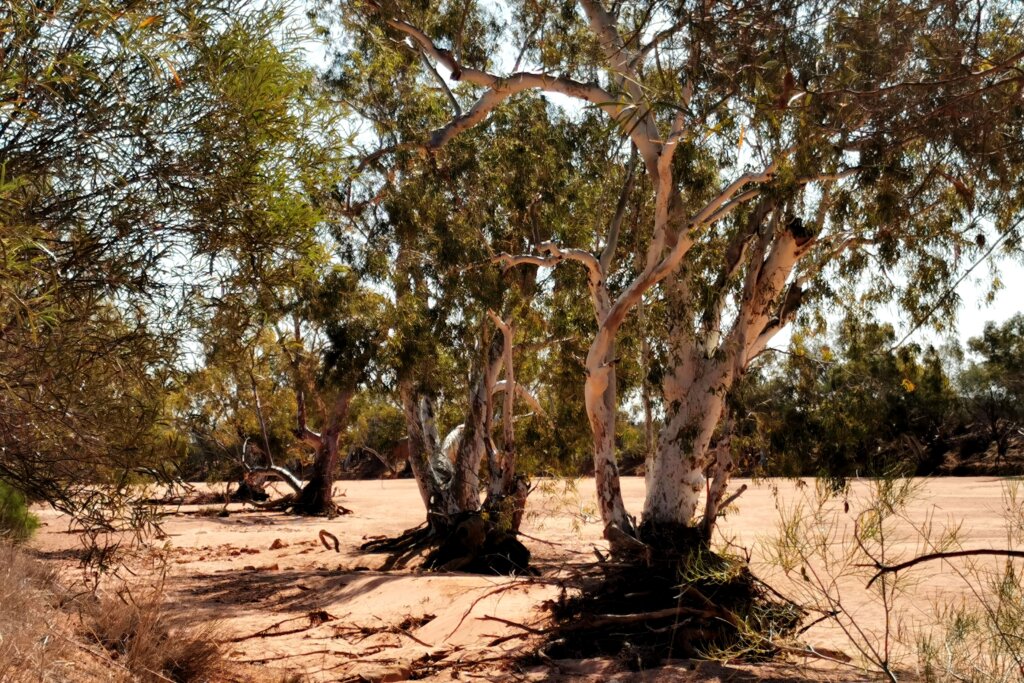
Between the homestead and the Northwest Coastal Highway, the quality of the road really improved, but the south westerly wind strengthened in the afternoon and made my goal to reach Wooramel Roadhouse very challenging. I was getting pretty tired and just tried to keep the pedals turning.
DAY 98 | 107 KM
With three days to go, I was getting quite excited about reaching the finish at Steep Point, but the forecast had me worried about the notorious southwesterly trade winds. Leaving the Wooramel Roadhouse on the highway I had to push into it head on for 75km before turning west to enter the Shark Bay World Heritage Area. Turning the corner, the southwesterly wasn’t such an issue as the scrubland provided some shelter from what was then a crosswind.
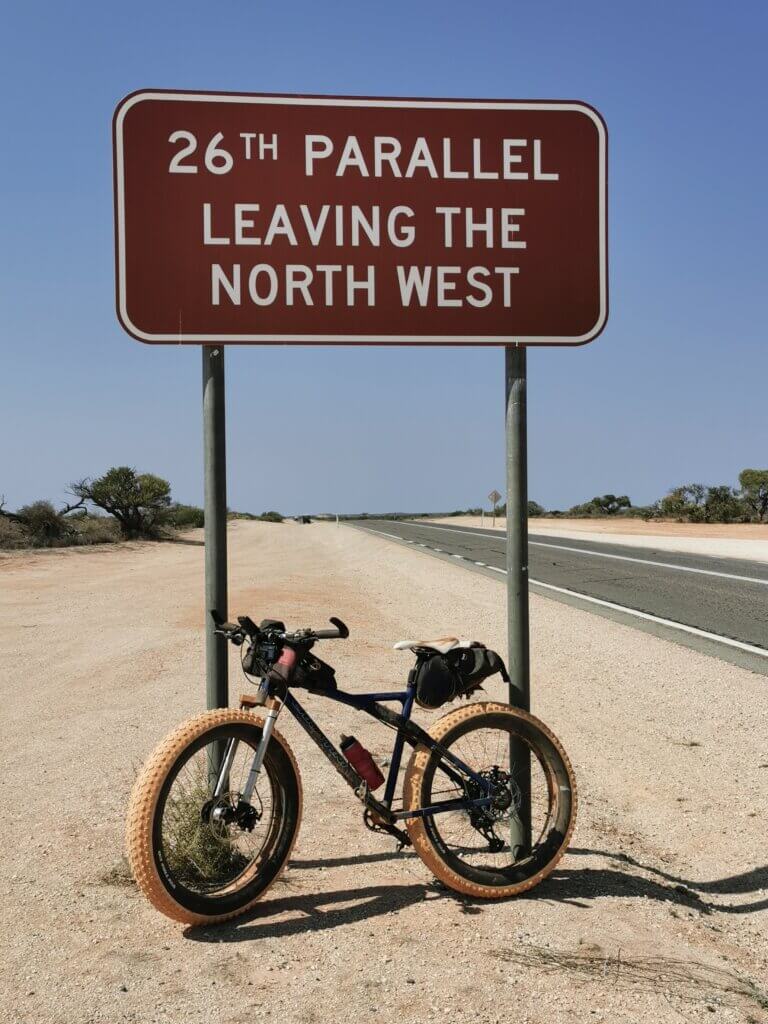
Reaching Hamelin Pool, it was a relief to see the ocean for the first time on this expedition since Cape Byron at the start of the journey. Hamelin Pool supports a unique ecology because of its hyper-saline waters. The microbial mats and stromatolites located at its southern beaches are one of the features of the region’s World Heritage listing.
Microbial mats and stromatolites are diverse and complex ecosystems where different species of bacteria and other microbes work together in symbiotic communities. In certain conditions the communities trap particles and create stone. When this happens, microbial mats become microbialites. Sometimes microbialites form taller, layered structures called stromatolites. The stromatolites and microbial mats in the shallows of Hamelin Pool are among the most diverse in the world and show what marine ecosystems would have looked like three billion years ago. Microbial mats have therefore been around for over 75 percent of the Earth’s history! Over the last two billion years cyanobacteria in microbial mats influenced evolution by breathing oxygen into the atmosphere. We would not have evolved without these primitive life forms.
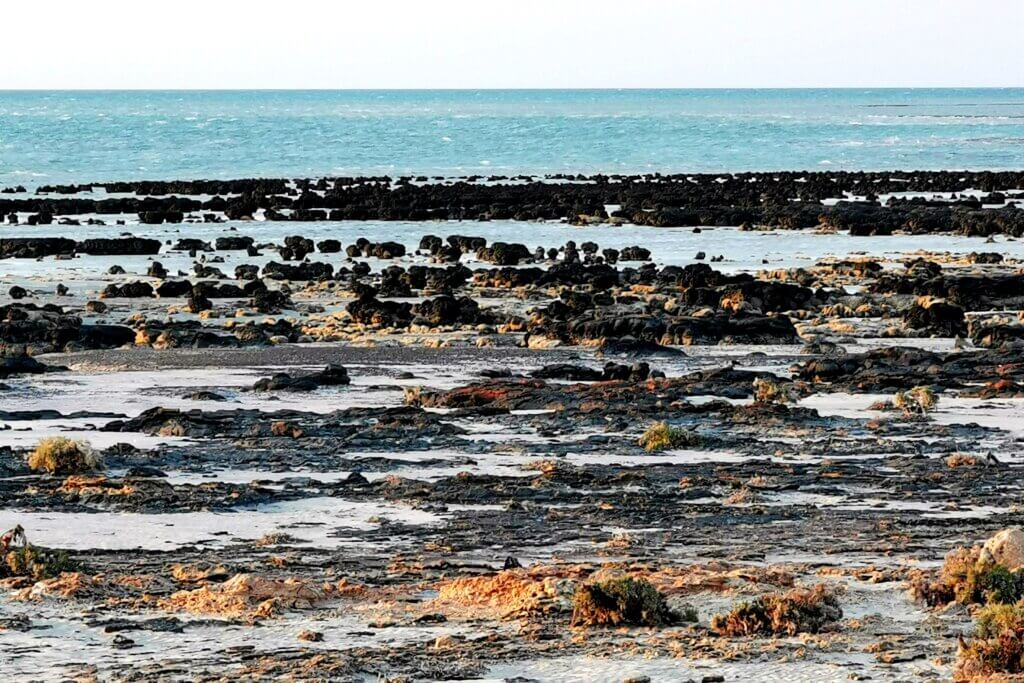
I had stopped off at Hamelin Pool and visited the stromatolites during my Great Australian Cycle Expedition in 2004, before the viewing boardwalks were destroyed in a cyclone. This time I had to be content watching the sunset over Hamelin Pool and the stromatolites, whose habitat is the shallow waters, just off the beach.
DAY 99 | 107 KM
From Hamelin Pool, I continued along the Denham Road for about 12km until I reached the turn off towards Useless Loop (salt mines) and Steep Point – 148km to go.
I was pleasantly surprised to discover that the first 22km of the sandy gravel road had been sealed. The route was a rollercoaster as the road bisected the direction of the sand ridges. As I pedalled west, the surrounding bush diminished and there was little to filter out the powerful gusts of wind, especially when I crossed the salt pans and later, when I reached the coastal heathland.
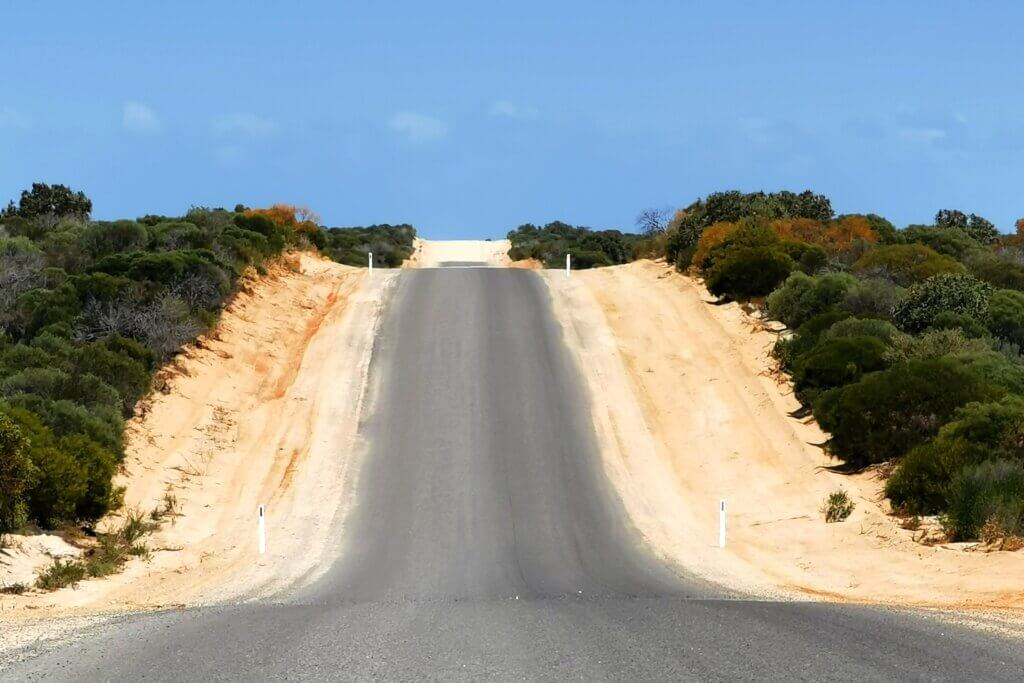
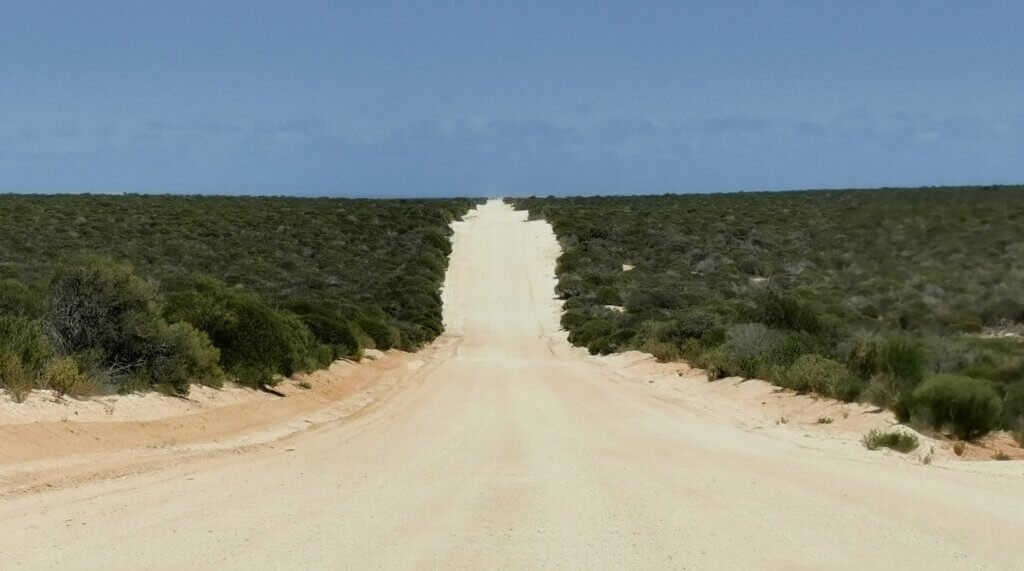
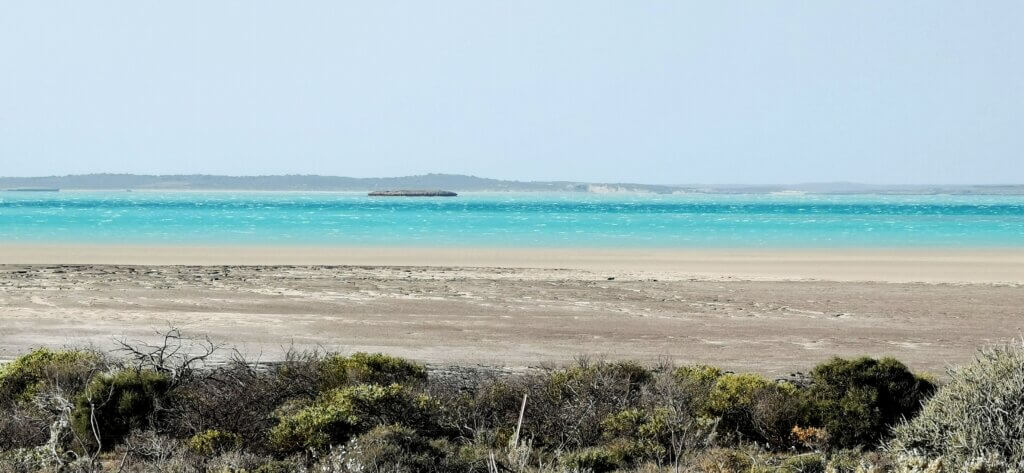
The whole of the penultimate day was a battle – with the wind, the corrugated, hilly road and my extremely tired legs. I had to get to Steep Point the following day so there was no choice except to push on so I was within “striking distance”. We had been aiming for a tiny camp spot we’d heard about but there was no shelter anywhere – it was all coastal heathland, the scrub no more than a metre high. It was so windy, we didn’t even try to pitch my tent. Mark’s tent was pegged to the ground with every peg we had and tied to the vehicles. The vehicles gave enough protection for us to cook – just – and I spent my last night sleeping in the back of Neil’s vehicle. It wasn’t how I imagined the last night of the expedition to be.
DAY 100 | 50 KM
I had been warned that the ride through Edel Land to Steep Point was going to be a big challenge. I was prepared mentally for the fight, even if my body was exhausted. After a few kilometres I passed the end of the well-maintained Useless Loop Road – at the Useless Loop (salt mine) turn off – and immediately the road turned to horrific corrugations and mostly sandy conditions (except for the salt pans).
On the first sections, there was just nowhere for me to cycle as the whole road was a mess. I continually tried to find the smoother sections on the very edge but often I would be swiping against the scrub that encroached on to the track. Mostly I just had to absorb the bumps. After 18km we reached the big sand dunes and I dropped my tyre pressure right down to about 5psi. At this pressure, the fatbike tyres really grip the sand. The all-wheel drive system remained switched on and gave a little more traction when the back wheel slipped.
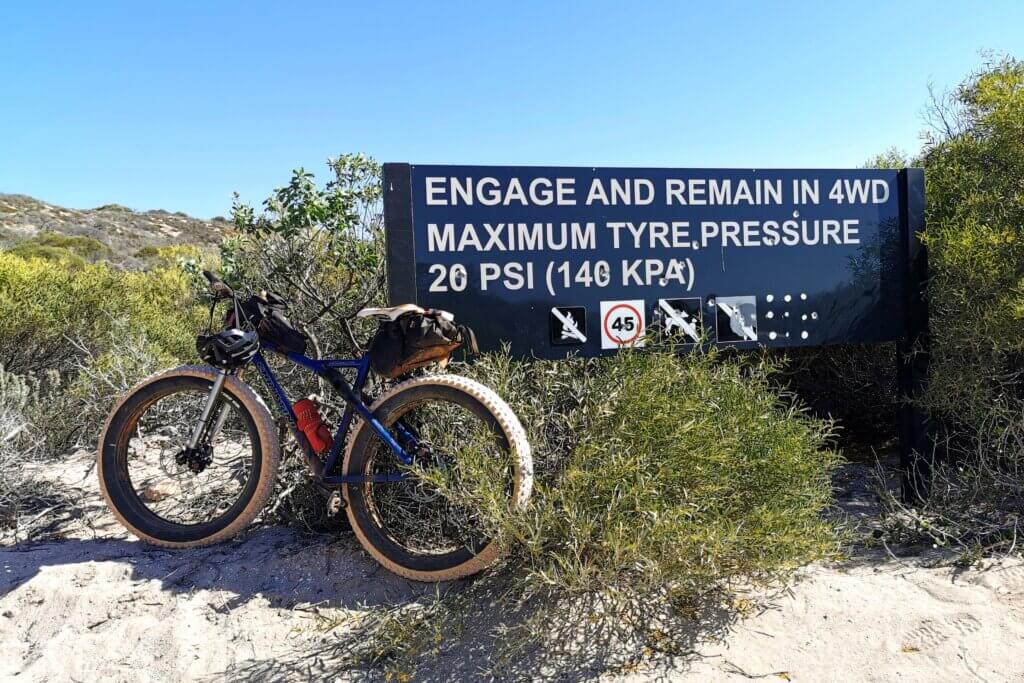
I had not had to walk my bike over any sand dunes on this journey and was determined to keep it that way, even though these dunes were totally chopped up by vehicles. There were approximately 7km of giant, soft sand dunes with steep ascents and descents and I managed to pedal the whole route. From there the track took an undulating, I bumpy course towards the beach. We had one final tea break to take it all in before tackling the last 16km – along the beach, then back onto the track, checking in at the ranger’s house, and then turning towards the country’s most westerly tip. At times it felt like the rollercoaster would never end. These sharp climbs served to drain every last drop of energy from my body.
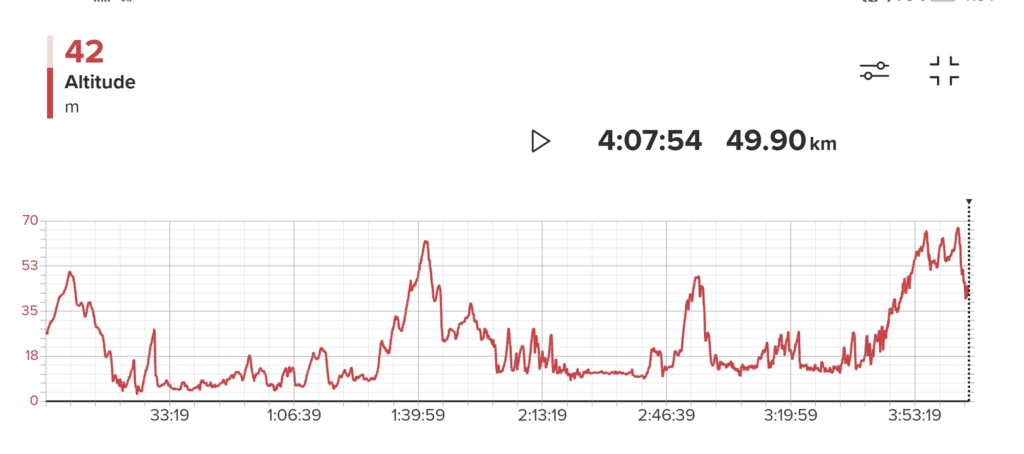
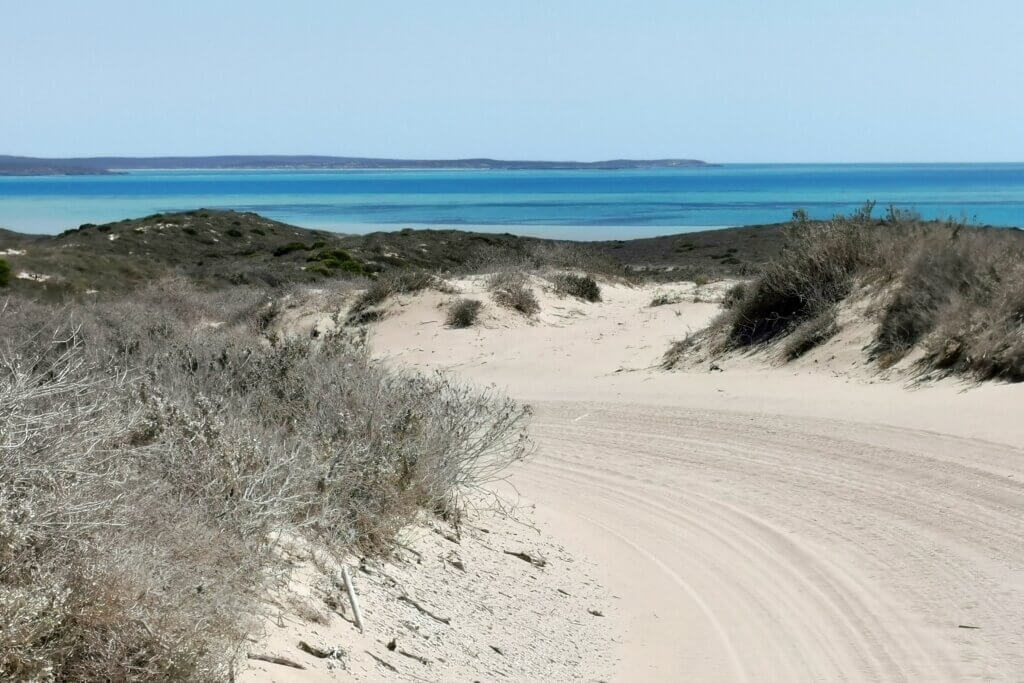
Steep Point is an incredibly beautiful and wild place, completely exposed to the elements, the cliffs drop sheer to the Indian Ocean. Large waves continually crashed into the rocks, and the wind created whitecaps over the ocean for as far as I could see. It was a challenge just to stay on the bike.
I reached the sign at Steep Point at around 1pm and we spent some time celebrating and filming the moment. I felt a strong symmetry between finishing my Breaking the Cycle in Africa expedition at Cape Hafun, Somalia, (Africa’s most easterly point) and the end of this continental crossing at Steep Point (Australia’s most westerly point). The landmarks are connected by the Indian Ocean and the finish of my journeys were in similarly windy conditions with a cliff dropping sheer to the Indian Ocean. Finally, similar to the end of the African expedition, I struggled to lift and balance my bike in the wind gusts.
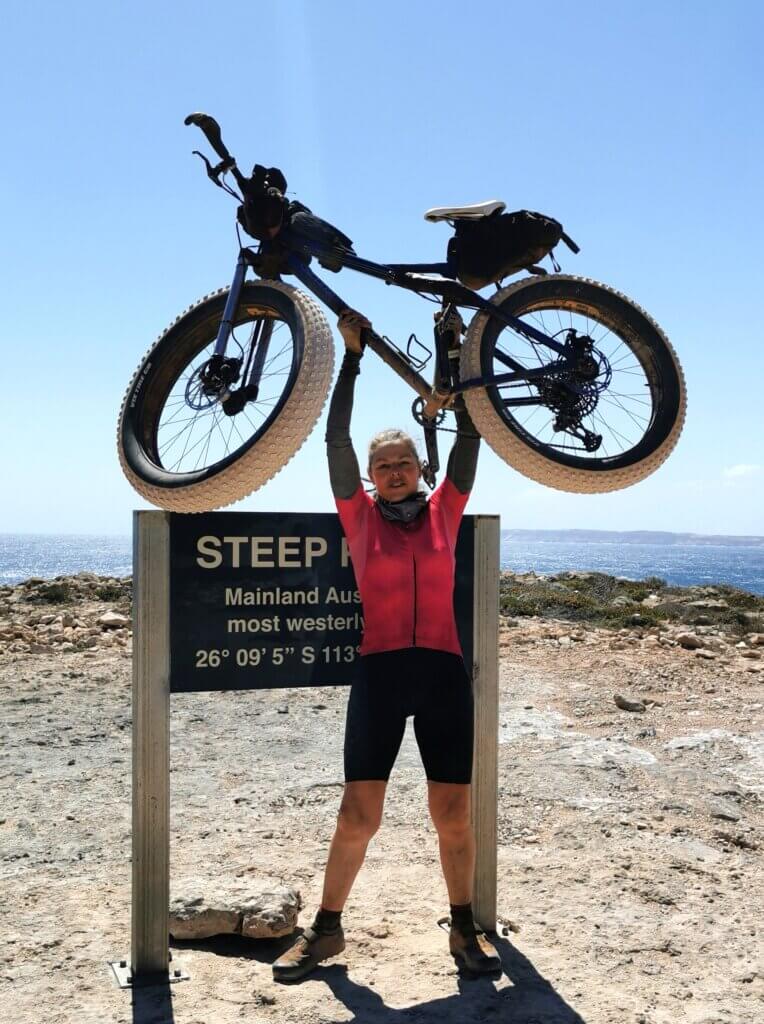
All expeditions have their challenges but never have any of my journeys presented so many curveballs as this one – my broken collarbone and then interstate COVID-19 restrictions in 2021, a month’s delay before we could start this one due to a health issue with a support team member, late rains blocking the roads and further delaying the 2023 start, the unseasonal flooding of Eyre Creek preventing me cycling across the Simpson Desert and along the Finke River, the heavy rains that blocked the Oodnadatta Track and forced me to take the only sealed route all the way south to Port Augusta, a three week delay due to a major vehicle breakdown near Coober Pedy and several other problems that required me to adapt my schedule/route. Somehow, through all of these issues, the we found a way through to finish only four days later than my original plan. I’d had to adapt the route and cycle more intensively than I had planned, but the adventure found its own path and the key purposes of the expedition have been achieved. That makes me very proud of this one.
We drove to Denham to film an amazing initiative by the Malgana people of Shark Bay – that is coming up in the next blog.

